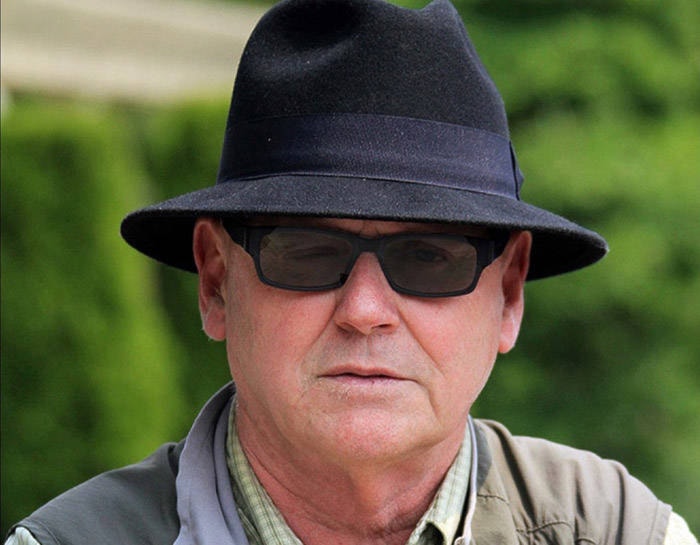“I saw people risking their lives to save other people’s homes just because they cared” – Paul Lawson, director Malcolm Knapp UBC Research Forest.
Paul Lawson is the director of the Malcolm Knapp UBC Research Forest in Maple Ridge and the Alex Fraser Research Forest near Williams Lake.
For him, the worst fire season in B.C. history last year was “a life-altering experience.”
It began July 6. Lawson’s Maple Ridge office got an emergency call from Alex Fraser. Fires had forced the evacuation of the town and closed Highway 7 north from 100 Mile House.
Now, Malcolm Knapp’s sister forest had seven fires of its own.
“The staff told B.C. Wildfire Service fires threatened their forest and Gavin Lake camp, nearby,” Lawson says. “It’s a non-profit education camp for kids.”
Jeremy Watkins, Malcolm Knapp’s assistant manager, heads up its fire protection plan.
“B.C. Wildfire [Services] were overwhelmed,” he explains, “focused on built-up areas, such as the town of Williams Lake and the airport; not able to attend our fires initially, nor provide resources at the start.”
Malcolm Knapp has developed a range of fire suppression strategies.
“We’ve acquired two fire trucks,” says Watkins. “One’s a four-wheel drive Ford with a 500-gallon water tank and pump.
“It’s a reliable vehicle that can go anywhere,” adds Lawson. “We’d trained on it at UBC. All forest workers have been required to complete the S100 Fire Fighting Course since 1988, when two loggers died in fires. Jeremy and I were certified.”
It’s training they’d use after the pair headed north in the four-wheel fire truck.
“We had no idea what to expect,” recalls Lawson.
Watkins won’t forget the drive.
“It was eerie going through the canyon and Hwy. 97 and have nobody to share the road with,” he recalls. “Cache Creek was black as night. At 93 Mile House, we encountered a mass exodus from Williams Lake. People spoke in quivering voices. Water bombers flew overhead. The deep thumping of the rotors shook everyone. You could see the stress people were under.”
Because Hwy. 97 north of 100 Mile was closed, the pair feared they’d be unable to continue to Williams Lake.
“The RCMP were redirecting traffic,” says Lawson, “but when they saw us in an emergency vehicle, they waved us through.”
On July 7, a day after the call from Alex Fraser, Lawson and Watkins were in Williams Lake, out of gas.
“There were just two stations open,” says Watkins. “Both had long line ups, but loggers saw us and gave us gas for the truck.”
Finding food was the next challenge.
“There was none in the grocery stores; their shelves empty,” Watkins says. “Gavin Lake staff supplied us with fish they caught in a local lake. That kept us going until supplies arrived.”
Lawson’s small crew immediately began fighting the Alex Fraser fires.
“Some Gavin Lake staff came out to help me put out a small fire that would have threatened their homes if not addressed. After that there was me, Jeremy, and a summer intern from Williams lake, a student, on the AFRF fires.”
On July 14, the first helicopter and B.C. Wildfire crew arrived.
“There was a huge cry of joy,” Lawson says. “By July 20, our efforts had been fully taken over by B.C. Wildfire. They had 60 people with helicopters and fixed wind aircraft. Of the seven fires that started July 7, we were able to get six out. I felt that before our initial attack, all seven fires would have become one and probably burned the entire forest and Gavin Lake Camp as well.”
Watkins credits the support of Alex Fraser staff, logging contractors, neighbors and “even strangers who wanted to help.”
Lawson agrees.
“It shows how incredible people are up there.”
Fires can break out anywhere. Lawson’s says Malcolm Knapp staff have put out fires “started by cigarettes, pot, and illegal camp fires, [Goose Lake] even a few last year at the top of Silver Valley Road, near our office.”
Lawson says lightning isn’t a significant cause on the coast.
“In UBC forest over the past 20 years, they’ve been 80 per cent human-caused.”
On the drive back to Maple Ridge, Lawson and Watkins brainstormed additions to Malcolm Knapp’s program. They’ve added water storage ponds in the forest that fire trucks can pull from.
“We now have 25 at various locations,” says Lawson.
“We’ve also upgraded our fire-fighting equipment and put in truck ramps at Loon and Marion lakes to draft water,” adds Watkins. “We’ve also bought more hose and pumps and we’re building a new tanker fill station with a hose able to fill 3,000 gallon tanks quickly.”
Malcolm Knapp operates a sawmill with eight staff. It has perimeter sprinklers. In summers, a student, patrolling the forest, watches for smoke, and Lawson credits members of the Ridge Meadows Hiking Club who report any problems they see.
In the event of a fire, Malcolm Knapp could call on B.C. Wildfire for helicopters with buckets, and “with Loon Lake and office staff, we could muster a crew of 20,” Lawson says.
He hopes that it be necessary, but if this year’s as dry as 2017, a good plan is the best defence.
Jack Emberly is a retired teacher, local author and environmentalist.
